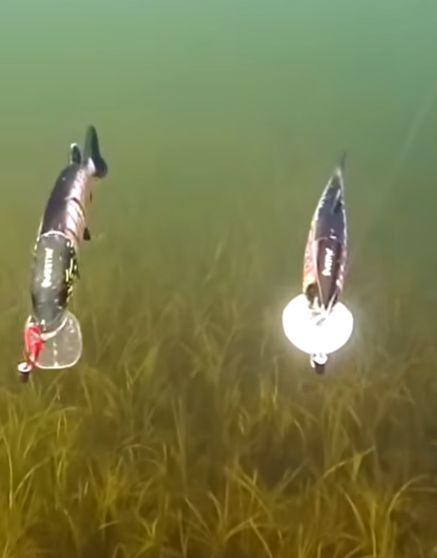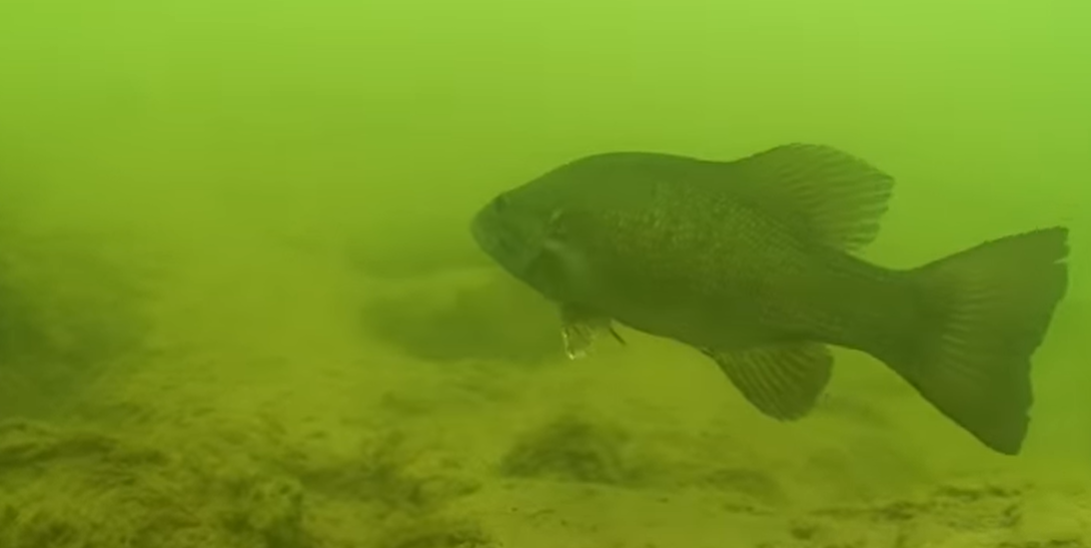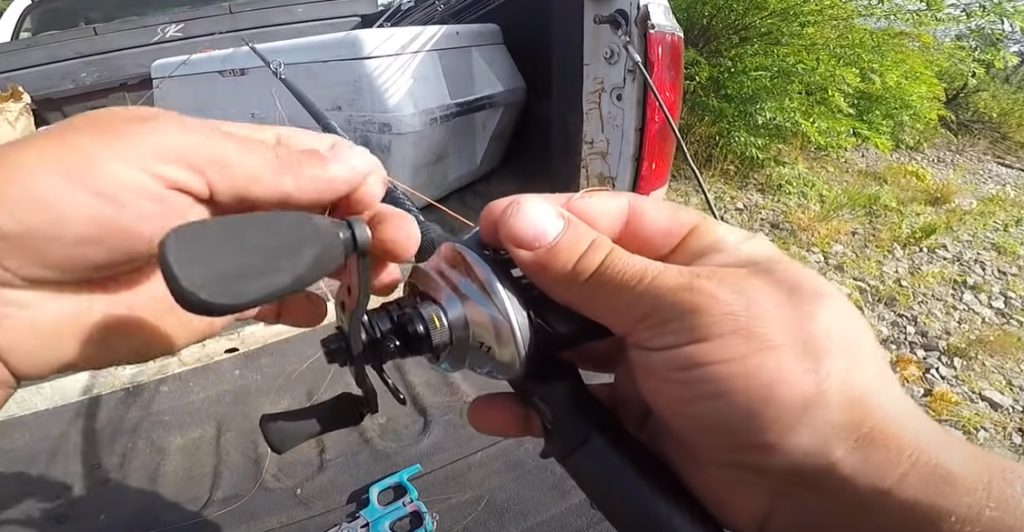To keep your fishing line tight in water, maintain a constant tension and use the appropriate weight. Adjust your rod tip and reel speed as needed for the conditions.
Fishing enthusiasts know that slack in your line can mean the difference between catching a fish and coming up empty-handed. Keeping your fishing line tight is crucial for detecting bites quickly and setting the hook effectively. Maintaining tension on the line doesn’t only aid in hook sets; it also helps in presenting your bait or lure more naturally and enticingly, critical for attracting fish.
Whether drifting in a current or casting from shore, a taut line allows for better control and responsiveness. Success on the water is often in the details, and line management is a skill that can dramatically increase your catch rate. Engage with the water’s rhythm, be attuned to your gear, and keep that line perfectly tensioned for the best fishing experience. Let’s explain How to Keep Fishing Lines Tight in Water.

Understanding The Importance Of A Tight Line
Maintaining a tight fishing line is crucial for a successful angling experience. A slackline can lead to missed catches, decreased sensitivity to bites, and less control over bait or lure presentation. Whether fishing in a tranquil pond or a flowing river, understanding the dynamics of keeping your line tight can dramatically improve your chances of reeling in the prize catch.
Essential Link Between Angler And Fish
The fishing line serves as the critical connection between the angler and the fish. A tight line allows for an instant and direct transfer of energy, ensuring that every movement from the fish is communicated to the angler’s hands. This connection is essential for both setting the hook effectively and reeling in the fish with precision. Without a taut line, the communication is lost, and so could the fish.
Detecting Bites And Strikes

A tight line also plays a vital role in detecting bites and strikes from fish. Even the slightest nibble sends vibrations up the line, alerting the angler to potential action below the surface. With a slack line, these subtle hints become nearly undetectable, increasing the likelihood of a missed opportunity. Therefore, keeping the line taut ensures that even the most delicate bites are felt, allowing for a timely and decisive reaction.
Maintaining Lure Or Bait Presentation
Effective lure or bait presentation is another compelling reason to keep your line tight. Fish are attracted to the movement of bait or lure in the water, and a properly tensioned line facilitates controllable and natural motion. It allows the angler to mimic the movements of prey, which is key to enticing fish. A slack line, on the other hand, could result in unnatural lure behavior, making it easy for fish to disregard the potential meal.
Factors That Cause Line Slack
Mastering the art of maintaining a tight fishing line can significantly Enrich your angling experience. Slack in your line reduces sensitivity, making it harder to feel when fish are nibbling at your bait or lure. Understanding the factors that cause line slack is essential for keeping a firm connection between you and the fish. Let’s Probe these factors and how you can counteract them.
Currents And Drift
Dealing directly with the forces of nature, currents, and water drifts plays a significant role in causing line slack. Water movement can swiftly carry your line away from the intended spot, creating slack and reducing control. Here are strategies to tackle this issue:
- Anchor Your Line: Use weights or bottom bouncers to keep your line in place against the current.
- Adjust Your Casting: Aim upstream to allow for natural drift and maintain a tight line as it flows downstream.
- Monitor and Reel: Regularly check your line and reel in any slack that develops.
Wind And Weather Conditions
Unpredictable wind and changing weather can wreak havoc on your fishing line. These conditions can create waves or surface movement, leading to line bowing and slack. To minimize the effects, consider the following tips:
- Heavier Tackle: Use heavier lures or weights to maintain line tension.
- Repositioning: Adjust your position to align with the wind direction to help keep your line tight.
- Tighten on the Go: Keep a firm grip and actively manage your reeling to adapt to sudden gusts.
Fish Behavior And Movements

Underwater inhabitants are not static, and their movements can directly impact your line tension. Fish darting around or swimming towards your position can generate slack in the line. Here’s how you can keep up with their unpredictable behavior:
- Stay Focused: Remain alert to react swiftly to fish movements.
- Reel Adjustments: Fine-tune your drag setting to ensure the right balance between line tension and allow for fishing fighting.
- Constant Contact: Maintain a continuous feel of the line to detect and respond to any changes caused by fish activities.
Choosing The Right Fishing Gear
Ensuring your fishing line remains taught during your angling adventures is key to a successful catch. It not only Enriches sensitivity to fish bites but also aids in effective hook sets. This precision stems from having the appropriate gear tailored to your fishing conditions and techniques. Let’s unravel the essentials of selecting fishing gear that guarantees a tight line, paramount for that trophy catch.
Picking The Suitable Line Type And Weight
The quest for the perfect fishing line hinges on two vital aspects: material and weight. The type of line you choose has a direct impact on its performance and tension. Monofilament lines are forgiving with stretchability, ideal for beginners, while braided lines offer minimal stretch and superior strength, perfect for experienced anglists seeking precision.
- Monofilament: Better for floating lures due to its buoyancy
- Braided: Excellent for deep water due to lack of stretch and high sensitivity
- Fluorocarbon: Virtually invisible underwater, making it a cunning choice for clear waters
Choosing a line that properly matches the weight of the lure and the target species is critical. Heavy lures require thicker, stronger lines, whereas lighter options pair well with fine, delicate lines that promote natural bait movement.
The Role Of The Reel: Drag And Tension Settings
A reel isn’t just a storage space for your line; its drag system is pivotal for maintaining line tension. The drag should be set to a level that prevents line breakage while still exerting enough resistance to tire out the fish. A fine-tuned drag meets a balance between control and forgiveness, preventing the line from becoming slack.
- Set the drag before your trip, adjusting for the line strength and expected fish size.
- Test the drag setting by pulling the line, ensuring it releases before reaching the breaking point.
- Adjust as needed during the fishing session to adapt to changing conditions and fish behavior.
Rod Selection For Optimal Sensitivity And Control
The right rod acts as an extension of your arm and is critical for both detecting subtle bites and maintaining line tension. A rod with the right length, action, and power will vastly improve your ability to keep the line tight and responsive. A longer rod allows for greater control over line slack, whereas a rod with fast action provides increased sensitivity—ideal for detecting even the slightest nibbles.
| Rod Action | Sensitivity | Best Use Case |
|---|---|---|
| Fast | High | Lure fishing where quick hook sets are needed |
| Medium | Moderate | All-purpose angling, blending flexibility and strength |
| Slow | Low | Fishing with live bait requires a more parabolic bend for cushioning |
Armed with the knowledge of these pivotal aspects of fishing gear, you’re well-equipped to keep your fishing line tight, no matter the waters you Probe. Fine-tuning your equipment is the secret sauce to a successful and gratifying fishing experience.
Effective Casting Techniques

Unlocking the secrets to effective casting techniques is essential for any angler looking to maintain a tight line in the water. A taut line is critical for increasing sensitivity, ensuring proper lure action, and detecting the subtlest of bites. Perfecting your cast is an interplay of skill, precision, and understanding the dynamics of your equipment, as well as the environment you fish in. Let’s investigate into the fundamentals that can upgrade your fishing strategy, keep your line tight, and improve your chances of reeling in the big one.
Mastering The Right Casting Motion
Perfecting the casting motion is pivotal for maintaining line tension. Focus on a smooth, fluid motion that starts with your entire body, not just the flick of a wrist. Begin with the following steps:
- Stand with your feet shoulder-width apart, ensuring a stable base.
- Grasp the rod with a firm yet comfortable grip.
- Align the rod tip with your target area and bring the rod back in a quick, controlled motion.
- Accelerate forward smoothly and snap the rod to a stop, releasing the line at the optimal moment for maximum distance and precision.
Practice this motion to refine your technique and achieve a consistent and precise cast every time.
Controlling The Line During And After The Cast
Control is crucial during and after the cast for keeping the line taut. Employ these strategies:
- Monitor the tension with your finger against the line as you cast.
- Adjust your reeling speed to match the lure’s movement through the water, preventing slack.
- Maintain vigilance, ready to tighten the line as needed when the lure hits the water.
- Utilize your rod’s tip to gently lift and reel in slack without disturbing the lure.
Stay alert and responsive to the natural dynamics of your line throughout your cast.
Adjustments For Different Fishing Environments
Adapting to diverse fishing environments is key for line management. Consider these adjustments:
| Environment | Adjustment |
|---|---|
| Windy Conditions | Cast at a lower trajectory and adjust your posture against the wind to minimize line bowing. |
| Fast Currents | Use heavier lures or weights to maintain contact with the bottom and prevent line drag. |
| Heavy Cover | Use stronger, abrasion-resistant lines and a more aggressive casting technique to penetrate through vegetation and structure. |
By tailoring your approach to the specific conditions, you can ensure optimal line tension and a successful fishing adventure.
Active Line Management Strategies
If you’re serious about angling, knowing how to keep your fishing line tight in water can make all the difference between a satisfying catch and a story about the one that got away. Active line management strategies are crucial for maintaining the right tension and responsiveness to ensure that you’re ready for action when a fish takes a bite. Let’s Plunge into a set of techniques that will keep you one step ahead of the game.
Constant Contact: Reeling Techniques And Speed
Maintaining constant contact with your line is essential for detecting bites promptly. This involves mastering the art of reeling, which balances retrieval speed and line tension. Here’s how you achieve this delicate balance:
- Match your reeling speed to the lure type: Fast-moving lures require quicker reeling to simulate lively prey, while slower reeling suits more passive bait.
- Responsive adjustments: Be ready to speed up or slow down your retrieve based on the resistance felt. If you feel slack, reel in quickly to restore tension.
- Use a variable speed reel to adapt to the conditions more effectively, enhancing your line control.
Utilizing Bobbers And Floats Effectively
Bobbers and floats are time-tested tools for maintaining a taut line between your rod and bait. They serve as strike indicators and help keep your bait at the desired depth. Here’s how to use them efficiently:
- Select the appropriate size of bobber for your line and bait to prevent unnecessary drag, which could result in slack.
- Adjust the bobber’s position on your line to match the depth where you expect the fish to be. This ensures your bait is right in the target zone.
- Monitor bobber movement closely, as it will alert you to even the subtlest nibbles from fish.
Line Watching And Sensory Perception
Being in tune with your line’s behavior is critical. Visual cues and tactile feedback combined allow for a high level of line management:
- Keep a vigilant eye on your line for unusual movements or slackness that could indicate bites or snags.
- Enrich your feel for the line by using your fingers to maintain contact with the line above the reel, sensing for the slightest twitches.
- Incorporate high-vis lines to boost your visual tracking, especially in low-light conditions or when fishing at a distance.
Troubleshooting Common Issues
Encountering difficulties with keeping your fishing line tight is not uncommon. A slackline can result in missed catches and reduced sensitivity to bites. By addressing common issues efficiently, you can Enrich your fishing experience and maintain a taut line, ready for action.
Dealing With Tangles And Snags
Tangles and snags are a fisherman’s nemesis and can create a slackline. Preventing these frustrating occurrences is pivotal. Begin by ensuring your spool is not overfilled and that you’re using the correct line weight for your rod and reel. Follow these steps to tackle snags:
- Stop reeling in immediately to prevent worsening the tangle.
- Assess the situation and gently pull on many sections of the line to locate the snag.
- If the snag persists, gently shake the rod while keeping the line taut to dislodge the hook.
Adapting To Sudden Changes In Water Conditions
Sudden changes in current, wind, or water depth can lead to slack lines. Stay vigilant and ready to adjust. If you notice changes:
- Immediately adjust your drag to maintain tension without breaking the line.
- Re-position your setup, if necessary, to compensate for the drift or current.
- Consider switching to a heavier sinker or lure to combat increased water movement.
Regular Maintenance To Prevent Loose Lines
Regular maintenance is key to preventing issues that lead to a loose line. Here’s a handy maintenance checklist:
| Maintenance Task | Description | Frequency |
|---|---|---|
| Check for nicks and frays | Inspect the line for damage that could weaken its strength. | Before each fishing trip |
| Clean your gear | Wash reels and lines to remove debris and salt buildup. | After fishing in saltwater, or every 5 trips in freshwater |
| Re-spool regularly | Replace old line to ensure optimal performance and tension. | At least once a season or after catching a big fish |
Implement these strategies to keep your line consistently tight and focused on reeling in your next big catch!
Frequently Asked Questions For How To Keep Fishing Line Tight In Water
How Do I Make My Fishing Line Tight/How to Keep Fishing Lines Tight in Water?
To tighten your fishing line, start by closing the bail on your reel. Then, hold the line just above the reel and pull to remove slack. Next, reel in the line slowly, maintaining tension. Lastly, adjust your drag knob for resistance if needed.
How Do I Increase Tension On My Fishing Line?
To increase tension on your fishing line, turn the reel’s drag knob clockwise. Check tension regularly to avoid snapping the line. Keep adjustments small for precise control.
How Do I Keep My Fishing Line From Slipping?
To prevent your fishing line from slipping, tightly tie secure knots, use a leader, apply a rubber-based cement on knots, choose the correct line weight for your tackle, and ensure regular maintenance of your line.
How Do I Keep My Fishing Line From Unraveling On My Reel?
Maintain tension on the line while winding the reel. Use rubber bands or tape to secure the line when not in use. Always store the rod horizontally to prevent line unwinding. Regularly check for any tangles or knots, and promptly address them.
Conclusion
Maintaining a tight fishing line is crucial for a successful catch. With the right techniques, tools, and attention to conditions, anglers can achieve perfect tension. Remember, practice makes perfect. So, cast your line, stay vigilant, and anticipate that thrilling bite.
Tight lines and happy fishing!

